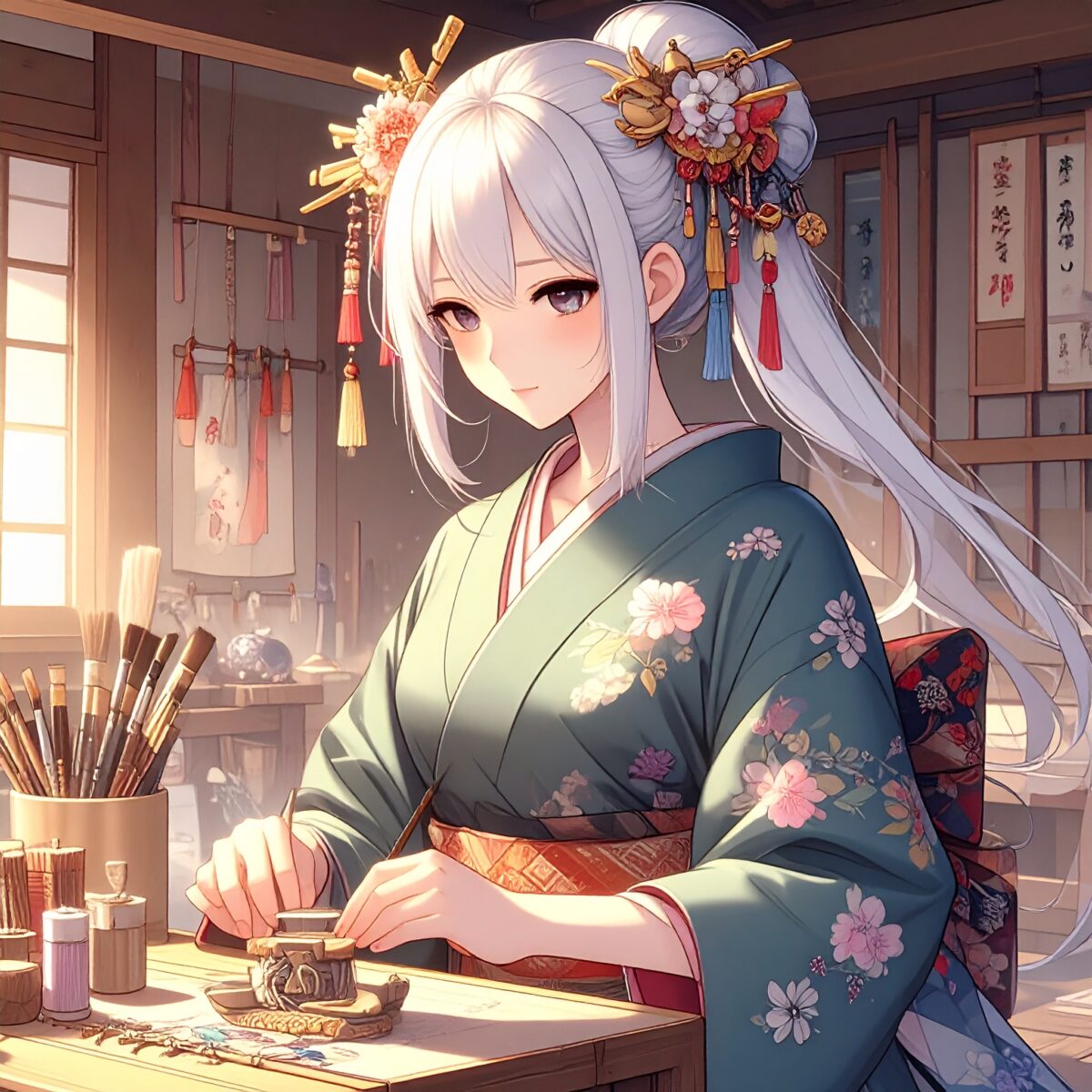The delicate, decorative cords known as mizuhiki, often found adorning gifts in Japan, carry meaning far beyond their elegant appearance. Through each intricate knot, feelings are conveyed, and with the intention of not untying them, bonds are symbolically preserved. The art of crafting mizuhiki accessories offers a chance to explore Japan’s unique “form of celebration”—a handmade journey that ties culture and the self together.
Mizuhiki traces its origins back to the Heian period, introduced to Japan by envoys returning from Tang China. Over time, it evolved into a uniquely Japanese form of ceremonial etiquette. Made from narrow strips of paper stiffened with glue and colored in symbolic hues such as red and white or gold and silver, mizuhiki has long been used in weddings, formal gifts, and sacred rituals. Each knot—like the plum blossom knot (ume-musubi) or the awaji knot (awaji-musubi)—embodies wishes for harmony, longevity, and enduring connections, expressing sentiments that transcend words.
In the workshop, participants first learn the background and symbolism of mizuhiki and its materials. Then, guided by skilled instructors, they begin crafting their own accessories using traditional knotting techniques. Choosing from a rainbow of cords, guests are taught the precise hand movements and sequence of ties needed to shape each design. While the delicate cords may initially slip or resist, the rhythm gradually becomes natural through patient repetition.
Creations may include plum blossom earrings, awaji knot keychains, small brooches, or elegant hairpins—each piece a wearable reminder of both cultural tradition and personal effort. The resulting accessories strike a beautiful balance: rooted in traditional Japanese aesthetics yet styled with a modern touch. Whether kept as a souvenir or shared as a gift, these handmade pieces carry heartfelt meaning and timeless charm.

This hands-on mizuhiki experience is thoughtfully designed for participants of all ages, making it especially popular among families. Children are drawn to the vivid colors and textures of the cords, while adults find quiet joy in the symbolism behind each knot. As families craft together, a warm, natural conversation emerges—“I love this color,” “This shape was tricky, wasn’t it?”—and time flows gently in the spirit of handmade connection.
Workshops are often held in calm, welcoming spaces such as renovated folk homes, local cultural centers, or corners of tourist information offices—places where guests can relax and focus on their creations. Some locations even offer the option to package finished items in decorative gift boxes, making them perfect for sharing as heartfelt souvenirs.
For international visitors, the visual beauty and cultural depth of mizuhiki are especially captivating. Multilingual instructions and materials that explain the meanings behind each knot are typically available, allowing non-Japanese speakers to fully engage and understand the deeper cultural significance. Through the act of making something by hand, participants naturally gain insight into Japan’s cherished custom of giving and heartfelt expression.
Mizuhiki is an art form where a single cord is transformed into a message of thought, celebration, and connection. Focusing on the act of tying, then gently shaping it into its final form, becomes an opportunity to reflect on one’s own feelings—and perhaps even one’s kindness toward others.
Creating a unique symbol of celebration with your own hands while traveling becomes a memory that lasts. Every time the accessory is worn, it recalls not only the texture of the cord, but also the quiet moment your hands shaped it—and the unseen knot that softly tied heart to heart.




